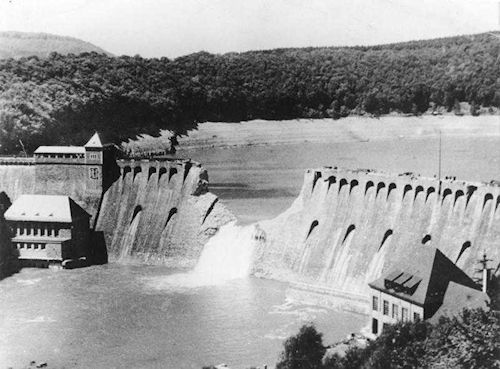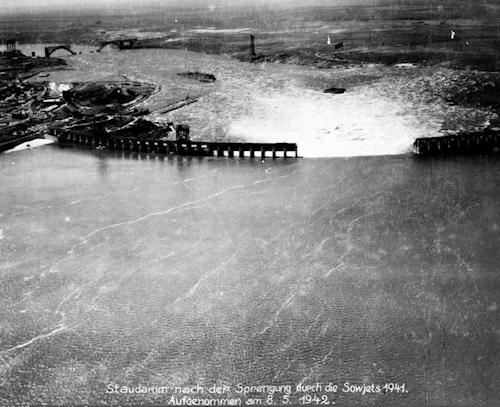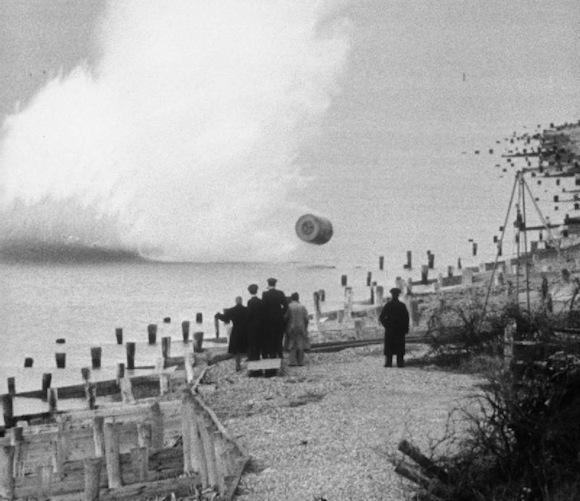After the scrupulous investigation by the New York Times of June 16, there are few doubts: the dam of the Kakhovka hydroelectric plant on the Dneper River (Nipro in our old atlases) was intentionally sabotaged on June 6th by the Russians. However, it is worthwhile to retrace the history of what it actually is it is not an isolated case.
The blast caused extensive flooding in several settlements in the Russian-occupied Kherson region, putting Crimea's own water supply at risk.
The effects of the environmental disaster immediately led analysts to think that the operation had been organized by the Russian army to prevent or slow down the Ukrainian counter-offensive. On the other hand, no night attacks by planes or drones or artillery were reported in the area. In addition, on June 9, Ukrainian intelligence intercepted a conversation between Russian soldiers, which claimed that the hydroelectric plant had been blown up by their sabotage group “On the night of June 6, the Russian invaders blew up the Kakhovskaya hydroelectric power station, destroying the engine room and the dam, the power station cannot be restored”. The news was reported by the Ukrainian online newspaper "Ukraine Pravda". On June 11, the Russian army then blew up a dam on the Mokry Yaly river in the Donetsk region, causing floods on both sides of the river. Having claimed responsibility for the destruction of the second dam, however, it was instinctive to think that the Kakhovskaya dam was also their work.
Now an investigation by the New York Times, entrusted to engineers and technicians, has unequivocally established that it was the Russians who sabotaged their own dam.
 The strategic use of water for defensive purposes is nothing new: Ravenna was the capital of the Western Roman Empire (402-476), of the Ostrogothic Kingdom (493-540) and of the Byzantine Exarchate (584-751) only and precisely because it was surrounded by malarial swamps. In more recent times Cavour flooded the rice fields of the Vercelli area in 1859 to delay the advance of the Austrians in the second War of Independence.
The strategic use of water for defensive purposes is nothing new: Ravenna was the capital of the Western Roman Empire (402-476), of the Ostrogothic Kingdom (493-540) and of the Byzantine Exarchate (584-751) only and precisely because it was surrounded by malarial swamps. In more recent times Cavour flooded the rice fields of the Vercelli area in 1859 to delay the advance of the Austrians in the second War of Independence.
Everyone will then remember if not the book by James Holland (1951), at least the film Dam Busters1 (The breakers of the dams, 1955), which realistically reconstructs the raid of 16-17 May 1943 known as Operation Chastise2 (Punishment), the attack against the German dams of the Eder (photo), Ennepe, Sorpe and Möhne rivers carried out by the Avro Lancaster bombers of the 617th squadron of the bomber command of the RAF. Memorable feat for various reasons: thehigh risk rate (8 aircraft lost out of 19, 53 pilots dead and 3 prisoners out of 133 total) and theuse of special bombs, which look like big oil drums.
These "bouncing bombs", bouncing bombs, were to be dropped at speed after the three waves of the Lancasters would have sailed at 450m. altitude to avoid German radars. These bombs (opening photo), specially designed, weighed approximately 4 tons, of which 3 of T4 explosives and had to rebound by rolling on the water in order to avoid the anti-torpedo nets and reach the dam wall, to then explode in time at a few meters of depth. The correct height for the release – 18 meters – was calculated by collimating two spotlights aimed at the stretch of water. It was a daring undertaking and in fact the squadron, together with its commander Guy Gibson, was awarded the Victoria Cross. The destruction of the dams caused enormous damage: two dams destroyed, a third damaged, between 1000 and 2000 civilians drowned and 30 km² of German territory submerged in water with at least 125 factories, 25 bridges and some railway junctions. 210 million tons of water had leaked from the Möhne dam alone. This was in 1943.
 Two years earlier - on August 18, 1941 - instead Stalin knowingly sabotaged the hydroelectric plant of the Dnieper near Zaporizhzhia (photo), officially called Dniprovska HES (DniproHES o Dneproges according to sources). Partly restored by the Germans with the help of Soviet prisoners of war, it was destroyed again in 1943 during the retreat and put back into service in 19473. 3 kg of TNT and 500 100 kg bombs were used by the Germans. each, which is roughly an indicator of how much explosive is needed to destroy a dam, in this consistent with the charge of the British bouncing bombs described above, even though the Kakhovskaya hydroelectric power station is much smaller than the Dneproges and modern explosives they are much more effective than the dynamite and TNT used in WWXNUMX
Two years earlier - on August 18, 1941 - instead Stalin knowingly sabotaged the hydroelectric plant of the Dnieper near Zaporizhzhia (photo), officially called Dniprovska HES (DniproHES o Dneproges according to sources). Partly restored by the Germans with the help of Soviet prisoners of war, it was destroyed again in 1943 during the retreat and put back into service in 19473. 3 kg of TNT and 500 100 kg bombs were used by the Germans. each, which is roughly an indicator of how much explosive is needed to destroy a dam, in this consistent with the charge of the British bouncing bombs described above, even though the Kakhovskaya hydroelectric power station is much smaller than the Dneproges and modern explosives they are much more effective than the dynamite and TNT used in WWXNUMX
However, it is difficult to think that a team of Ukrainian raiders could carry so much explosive on their shoulders and that such a plant was not manned. It is true that in the previous months the dam had been subject to rocket fire Himars, but the Norwegian Institute of Seismology (Norsar) on June 6 had detected an "explosion" emanating from the Ukrainian Kakhovka dam region before the moment of the collapse. At the same time, between 02.35 and 02.54, two seismographs – one in Ukraine, the other in Romania – recorded the quake, supporting the idea that the hydroelectric dam, located in an area under Russian control, had not given way due to the damage suffered during the previous months' bombings. At least from the aerial photos it appears that the engine room was not damaged by the explosion, the destruction started with the valves, and then the water swept away everything in its path.
It will be said that it was enough to open the valves instead of placing the bomb and the Russians still insist on the version of the progressive damage to the structures following the repeated bombings throughout the past period, but by now certain phrases are out of date.
What is worrying now is a possible sabotage of the Zaporižžja plant. The Russians have shown that they still believe in the scorched earth strategy with which they have won wars (defensive) since the time of Napoleon if not earlier, when Charles XII of Sweden in 1704 pushed as far as Poltava, where they still fight today.
Even if a vast military and ideological literature has been built on the subject by Russia, in reality destroying one's own country is not a great strategy, it just means not having better ideas.
Footnotes
https://en.wikipedia.org/wiki/The_Dam_Busters_%28film%29
https://it.m.wikipedia.org/wiki/Operazione_Chastise
https://www.encyclopediaofukraine.com/display.asp?linkpath=pages%5CD%5CN...
Photo: IWM / web












